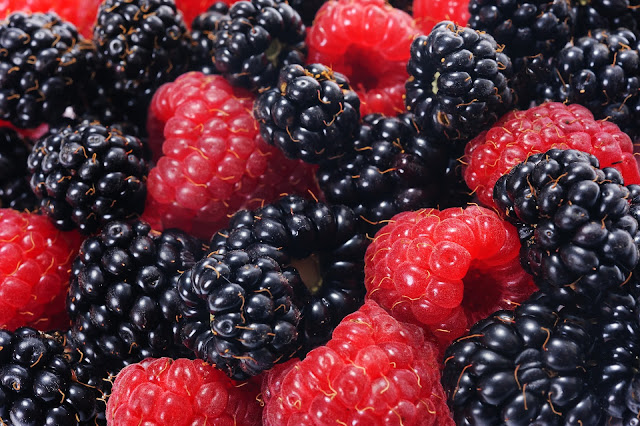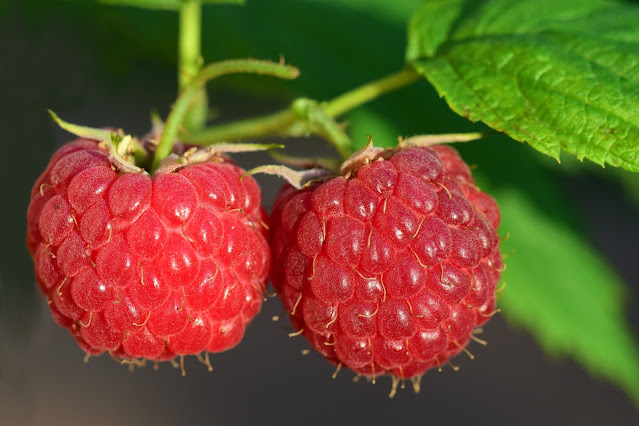Blackberries and raspberries kicked off the 2020's as the Herb of the Year. Scientifically known as Rubus, and referred to as brambles, it would be hard to find a more useful herb for the homestead and self-reliant homeowner. Learning how to grow blackberries and raspberries provides delicious berries that can be eaten straight off the vine or cooked into cobblers, crisps and tons of other dishes. The berries can also be turned into products like jams, jellies or even wines for personal use or for sale to add diversity to farm income. Some even grow the berries and offer them as a u-pick product during the summer months providing customer foot traffic to the farm.
To Plant or Not to Plant!
If you’ve got acreage, you may be lucky enough to find some bramble patches with blackberries, raspberries or both growing wild. If you’ve got those patches, keep them. They are a find and the stuff of many a childhood memory picking and eating sweet berries until fingers were stained red.
Wild brambles are also important for local wildlife, obviously as a food source, but also providing a home and protection for many.
If you’re not sure if you’ve got blackberries or raspberries on hand, a good way to tell the difference is that individual raspberries will pull off the stem hollow inside leaving the receptacle behind on the plant. Blackberries will pull completely off the stem leaving nothing behind. Raspberries are also hairy whereas blackberries are smooth fruits.
Thorns!
Wild brambles are full of thorns and must be picked with caution. But if you’re starting a bramble patch from scratch, you’ll find plenty of thornless varieties in your local garden store aisles. Berry production from a wild bramble patch can be unpredictable as rough winter weather and grazing by local wildlife can take their toll. If you’ve got bramble patches, it’s good to keep an eye on them so you can get to the ripe fruit first.
Pin the image below to save this information for later.
The Lifecycle of Rubus
Whether you’ve got a wild bramble patch or you’re planting some nursery plants, it’s important to understand how these berries grow and produce. The roots and crowns are perennial, meaning they come back from year to year. The branches are biennial, meaning they have a two-year lifecycle. The first year they are called primocanes. They do not produce fruit, just growth and foliage. In the second year, they are called floricanes. They produce fruit and then die back. If you’re buying nursery cultivars, pay attention to the label. Some plants are primocane producing, meaning they produce fruit on first-year canes.
In a wild bramble patch, floricanes naturally die back and break off with time. They fall to the ground and are absorbed back into nature. The natural ebb and flow of cane growth can result in a rather large patch that may have to be managed as part of a good land-use plan. In a cultivated garden, it’s best to manage plant growth by trimming off spent floricanes and trellising growing canes to allow for better airflow and smaller patch sizes.
Folklore of Brambles
Blackberries have been around thousands of years and grow throughout the world. In this time and breadth of space, folklore has grown around these delicious plants. Some say their thorny stems were used as Christ’s Crown of Thorns with the red of the berries representing his blood. It’s also said to be bad to eat blackberries after September 29, a date known as Michaelmus or National Poisoned Blackberry Day. Legend has it that Archangel Michael fought with and banished Lucifer from heaven on this date. When Lucifer fell from heaven, he landed on a thorny blackberry plant in hell. Naturally, he hated that plant, so he spat on it and cursed it.
On the other hand, while raspberries have been around for a long time too (their seeds have been found in Roman settlements) the folklore surrounding raspberries is much kinder. Literally, they say the juice of raspberries represents the blood flowing to the heart, which is where kindness is said to start. Raspberries played an important part in colonial America after tea was taxed in 1773. Since colonists were skipping imported tea, they turned to raspberry leaves to help fill the need.
Planting Tips
If you’re lucky enough to have wild berry brambles, you have no worries about where to plant your berries. If you’re planting a berry patch, you’re also in luck. Because blackberries and raspberries are native to the United States, they adapt and grow well in most regions.
A sunny spot is best for berry plants with good soil and drainage. You can get a soil test through your local extension service to analyze your soil composition and amend it as needed before planting.
In the beginning, your plants will need regular water as they get established. After that, watering should only be needed in times of drought.
As mentioned, trellising is needed to provide airflow and support. If you don’t trellis, your plants can still live, they’ll just be floppy and spread. Trellising can be homemade - planting berries along a fencerow means the fence does double duty. If you’re growing a u-pick berry patch, it’s worth it to look into commercial trellising and high hoop houses. These can help maximize your berry growth and minimize winter weather damage.
Because there are so many varieties to choose from, follow the pruning instructions that come with your specific plant. Floricane fruiters will require trimming of spent canes where primocane fruiters can sometimes be cut completely back to the ground each fall.
Specific plants will vary when they produce berries – some bear fruit throughout the season, others produce during a specific time period (early, middle or late season). Depending on how you plan to use your berries, this matters. Do you plan to can jams and jellies or sell homemade pies and need product through your selling season? Do you want to host u-pickers and need berries during the summer when kids are off school? Some say the time of fruiting changes the flavor of the berries. Others say late-producing plants are more susceptible to disease. If you’re just starting out, you may want to plant a few varieties and see what tastes the best, then adjust and expand from there.
No matter what plants you choose, growing brambles or seeking out the wild brambles on your land in this year of Rubus can be a fun and yummy endeavor.
This article about how to grow blackberries and raspberries was originally published in The New Pioneer magazine.






No comments:
Post a Comment